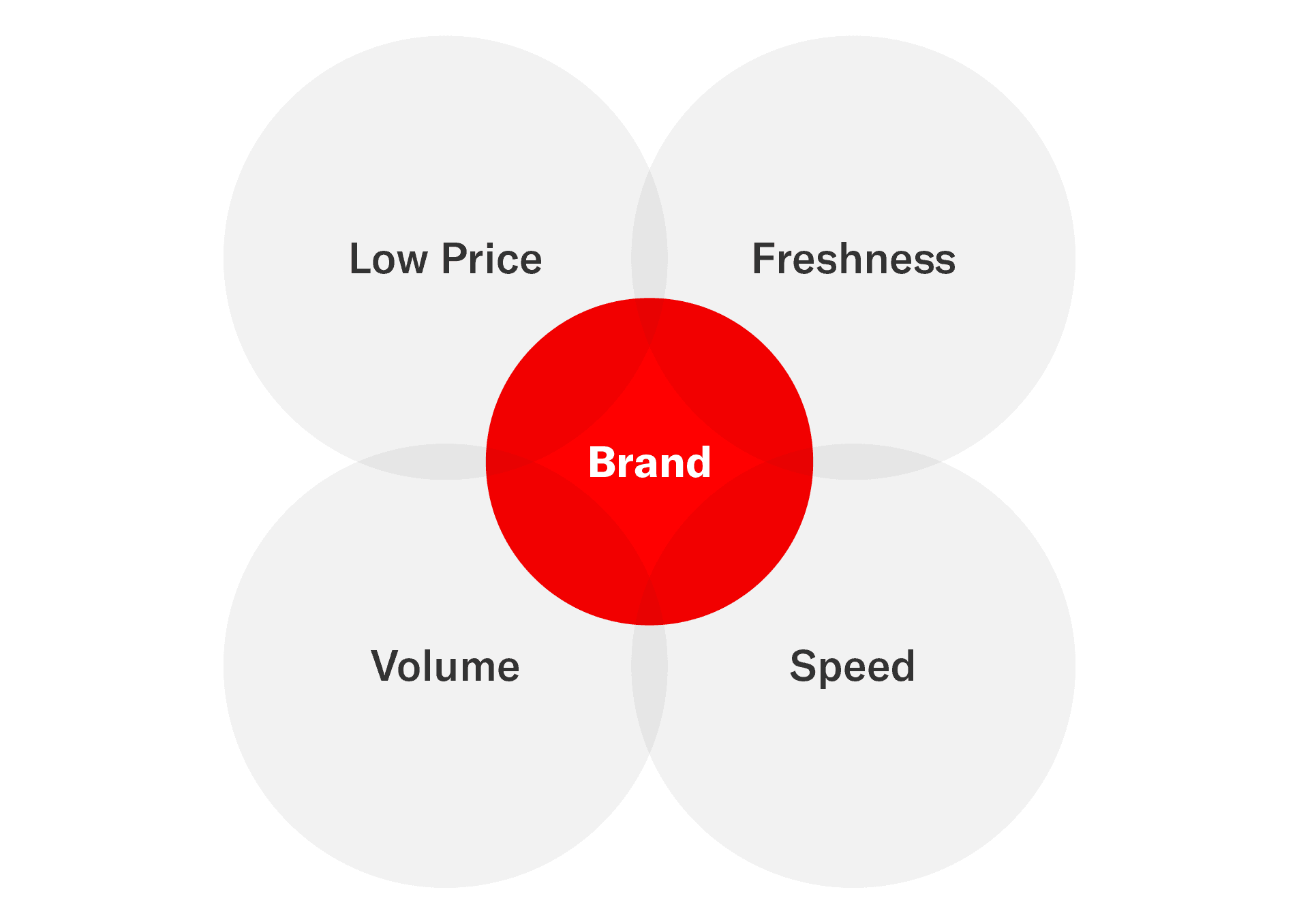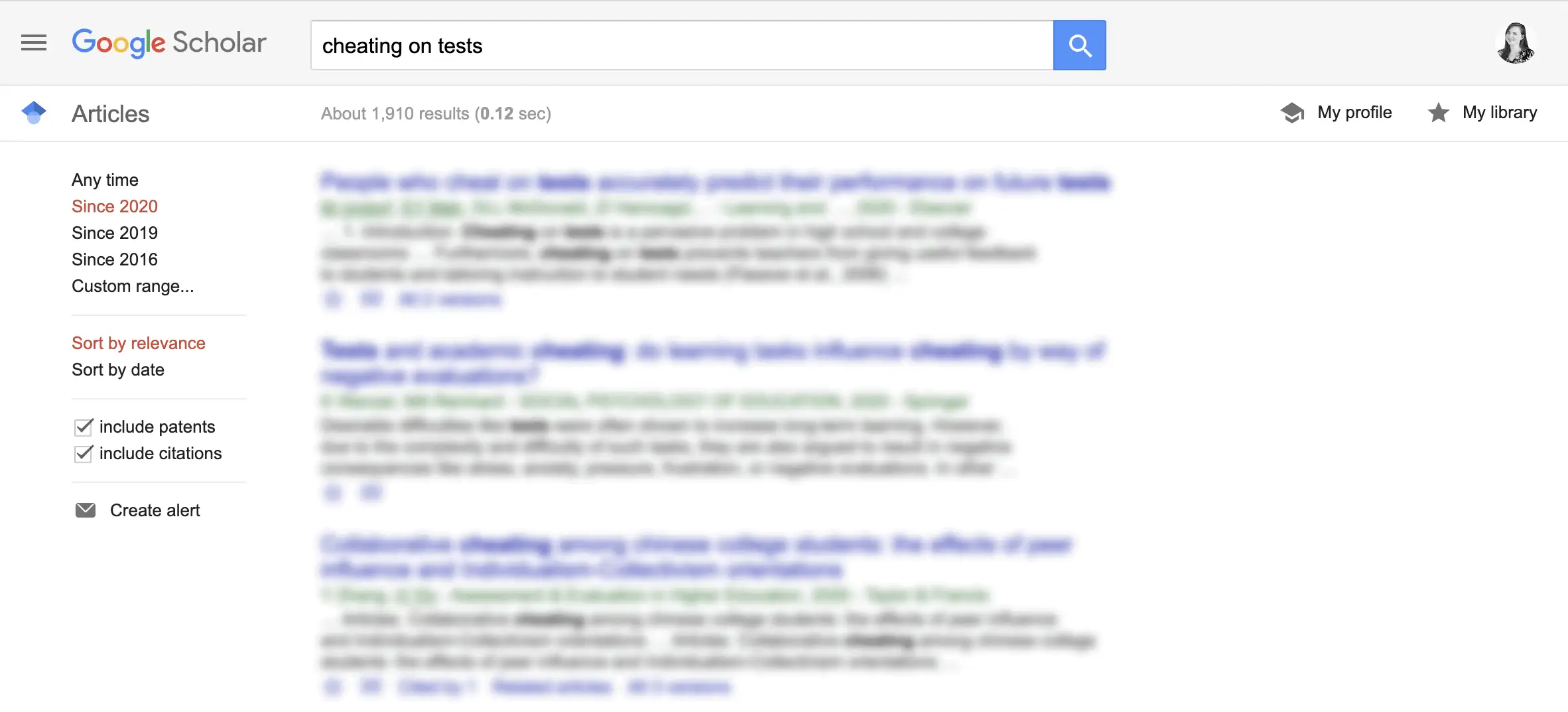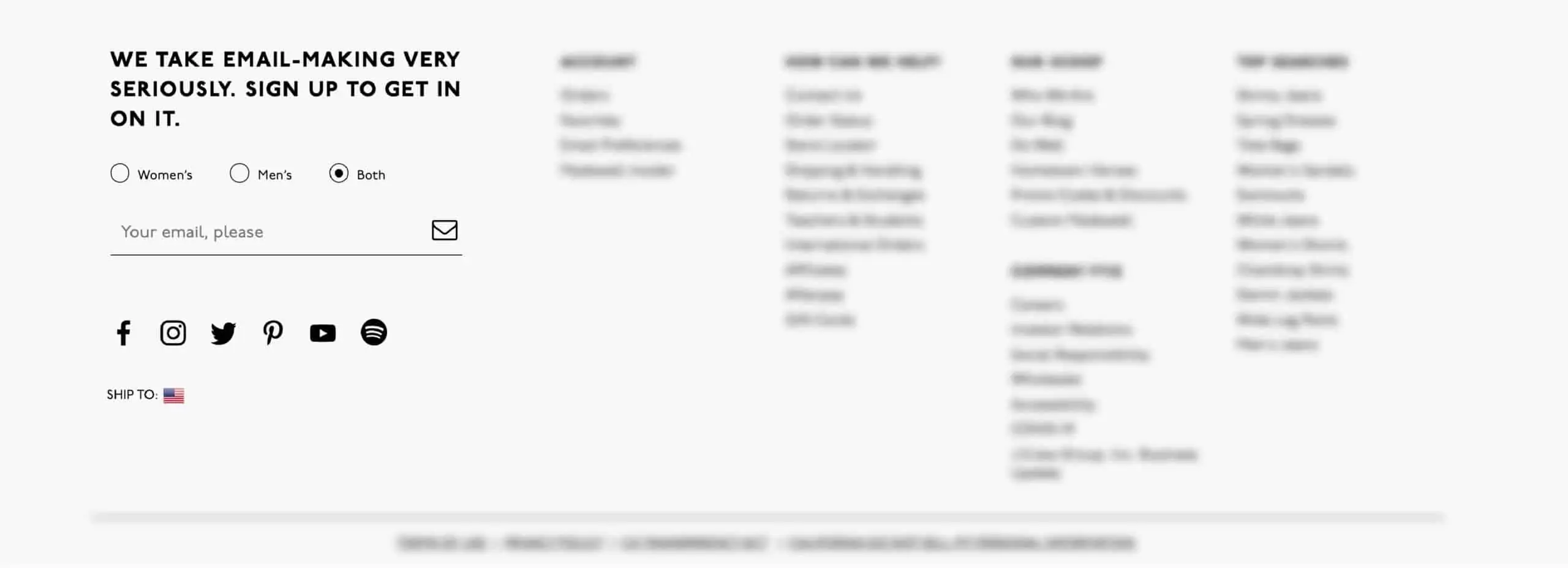Whether you’ve recently launched a blog or your blog posts aren’t bringing you any value, we turned years of experience creating content as a 115-person agency into 12 steps that will help you write a good blog post.
A brand’s blog is an important pillar of the business. It’s a channel for customers to understand the story behind your brand, build your brand’s image and online presence and, ultimately, understand more about who your customers are.
It’s not enough to write blog posts just to keep your blog updated. We’ve helped numerous brands grow their search presence, organic traffic and customer base through their blog content—even growing three blog’s organic traffic from 0 per month to 500K per month in the matter of two years.
Here’s our exact process used to drive the traffic through actionable blog posts, distilled into 12 easy-to-understand steps.
1. Define Your Audience
Whether you’re working with a small business or a Fortune 500 brand, you can’t get your message across without knowing who you’re writing for.
If you don’t yet have buyer personas or a representation of your ideal customer, start by identifying who makes up this group of people. Here are some ways that you can uncover who your customer is:
- Examine your email database: If you’ve captured emails from current or prospective customers, dive into how you got these leads to identify who the customers are.
- Analyze your organic traffic: Look through your traffic to understand how people are finding your site through your acquisitions.
- Ask the sales team: Your sales team has insight into the customers they’re interacting with the most. Pick their brain. If you’re on a small team, consider what group of people has been largely interested in your product or service.
- Hold one-on-one conversations: Talk to your customers. Understand more about them through one-on-one conversations to learn more about who they are.
Jot down demographics that define them such as their age, gender, location, occupation and any other details you can gather.
Once you understand your audience better, you’ll be able to write blog posts that answer their biggest questions and concerns. The value you deliver will keep them coming back to your blog and can, in turn, win them over as valued customers.
Let’s take a look at a brand who clearly mapped their blog posts to their ideal customer: The Knot.
The Knot offers tools that help couples with wedding planning, from the engagement to becoming newlyweds. They’ve identified their audience and continue to deliver blog content that speaks to them with how-to guides and tips to walk them through the entire wedding planning process.
The more blog posts you write, the better you’ll understand who your audience is through comments and emails from your readers.
2. Nail Down a Topic
Select a topic that will be engaging to your audience in conjunction with taking steps towards your content marketing and business goals.
First, take a look at your competitors to see what type of content they’re creating that could also resonate with your audience. The simplest way to do this is to search for your product or service offerings and see what brands are ranking for it.
For example, if you’re a company that refinances student loans, you could search “student loan refinancing,” which results in companies such as NerdWallet, SoFi, Credible, Earnest and more. These are competitors who write blog posts with similar goals in mind to you. From here, you can dive into their content to inspire topics for your blog post.
Here are some tools you can use to help you find a topic for your blog post:
- SEMRush: Dive deep into what’s converting best for your competitors and use your expertise to write a blog post that does an even better job of answering search intent.
- Ahrefs: Run a content gap analysis to understand what you’re not ranking for, but your competitors are.
- BuzzSumo: Learn more about what topics are performing best in your industry and capitalize on it.
- Reddit: Use threads that are related to your brand to inspire content ideas.
- Google News: Identify news in your industry or related to your product offering.
Learn more about selecting a topic through content strategy from our process for building 250K+ monthly visits.
3. Consider Your Distribution Method
You understand your audience and have picked a topic to write about. Now it’s time to ask yourself: how will someone read this?
This question is often overlooked (and even by major brands). And that’s often how some blog posts end up missing the mark.
We consider the distribution method upfront to help shape our blog post with our reader’s in mind. These are the possible angles your blog post distribution method could stem from:
- Your email and social media audience: If you have built up an audience, it’s a no brainer to share your content with them. However, if not, it’s even more important that you lean on the below points.
- Rank through organic search: If you don’t yet have an audience, going after search is a great way to build one. Target an attainable and fitting keyword research for your blog post.
- Egobait outreach: If you reference or quote someone in your blog post, you’ve opened up the perfect opportunity to notify them about your post when it’s live. This could lead to a link on their site or a mention through their social media page.
- Cold email outreach: Choose a topic that warrants other sites to link to you through actively pitching them once it’s live.
You’re not limited to one approach, but your blog post will be much stronger if you’re prepared for distribution prior to the writing stage.
4. Write Your Title
Now that you understand your audience and have selected a topic, you’re ready to start your blog post. Begin by brainstorming title ideas to help guide your post by analyzing the search engine results page (SERP) for your targeted keyword. There you can understand what titles are used for top-performing content and shape your title around that.
What’s most important to consider? Click-through rate (CTR), or the ratio of users who click on your blog post. Your title is your first impression. It will help the searcher decide if they want to click on your blog post.
There are five elements that drive clicks—low price, freshness, brand, volume and speed. Every blog post uses at least one of these elements, and some even use two to three.
We go into detail about how to improve title tag CTR in a separate blog post.
Once you have some title options, make sure to consider how long your title is—preferably less than 60 characters, so it doesn’t get cut off on the SERP. For example, when you search the trending topic “whipped coffee,” you can see this title being cut off for being too long.
Once you have a few attention-grabbing title options, you’re ready to outline your blog post.
5. Outline Your Blog Post
A key component to writing a good blog post is by organizing your thoughts in an outline before writing the post. The structure will help keep you on track in the writing process and will help you rank for your intended keyword.
Start your outline by including the expected URL, meta description, category and more at the top for quick reference. Then, include the title options at the top with placeholders for the body.
Consider what format will best appeal to your readers such as a listicle, news piece, infographic, long-form guide, etc.
Feel free to use this template to start your blog post.
6. Do Your Research
You have the opportunity to gain the trust of your readers with thorough and thoughtful research. Research supporting points, run a survey or source unique quotes to back up your points and guide your writing.
Here are some credible sources you can use to find information:
- Scholarly sources: Use scholarly databases like Google Scholar, LexisNexis and EBSCO to find trusted journals and studies.
Our go-to when researching my survey-driven blog posts is Google Scholar since we can quickly find related studies to back up the findings. For example, say I ran a survey revealing how many college students had cheated on an exam in the past and got away with it. I’d then turn to Google Scholar to see if there are any studies that I can use to back up my findings through tailored searches like “cheating on tests,” “academic cheating,” and “ethics of cheating,” which I’d narrow down to the current year.
- Government sites: Government websites have loads of information available to the public, but it can sometimes be difficult to dig up. Use strategic search queries to locate the information you need such as: car emissions inurl:.gov “2019”.
- Credible news sources: Refer to trusted publications for credible information such as The New York Times, The Washington Post and Bloomberg.
If you’re looking for unique quotes, reach out to experts in the field you’re covering. Here are some ways to source expert quotes:
- Search strings: You can find experts who have covered specific topics through search operators such as: “financial expert” title:loans. Once you have the expert’s name, you can search for their personal website or reach out to them via LinkedIn or Twitter to request a quote.
- HARO: You can use Help a Reporter Out (HARO) to ask for a quote in a mass email to PR folks, many of whom represent experts in various fields.
Doing your research before the writing phase will allow you to shape your story before fully writing it. And, since it takes time to source quotes or run a survey, it’s helpful to start the process before writing your blog post to see what you can come up with.
7. Write Your Blog Post
Now’s the time: write your blog post!
Follow your outline and write without stopping to edit too frequently. Remember that your first draft doesn’t need to be perfect—it’s all about getting the words down and editing thereafter.
Keep your formatting top-of-mind in the writing process. Break up your piece with paragraph breaks, subheadings or bullets to allow readers to easily follow (or skim) your copy.
Here are some tools that will help you write your piece:
- AP Stylebook Online: Quick guidance on English grammar style and usage.
- Grammarly: An English language tool that uses artificial intelligence to improve your writing.
- Thesaurus: Can’t find the word you’re looking for? Thesaurus is a great tool to quickly find synonyms.
Once you write the meat of your piece, return to the introduction and make sure it’s a true representation of your blog post.
8. Edit Your Blog Post
No matter how experienced a writer you are, it’s always encouraged to edit your blog post.
Even if you don’t have a designated editor on your team, we recommend getting another set of eyes on your piece. For example, in addition to having editors on staff, all writers are paired with an editing buddy to give a first pass at editing each other’s work. You can also turn to Upwork and hire an hourly proofreader.
Throughout the editing process, the aim is to:
- Analyze structure: Make sure that your blog post is easy to follow and in a digestible order.
- Proofread: Spell check doesn’t catch everything—confirm that everything is spelled correctly and grammatically correct.
- Ensure style and tone alignment: Make sure your piece follows the brand guidelines.
- Guarantee clarity: Confirm that you’re getting your point across to the reader with clear and concise copy.
Once your piece is edited, you’re ready to move onto the visual component of creating a good blog post.
9. Add Design Elements
Using design elements in your blog post makes it easily digestible for readers. Plus, you don’t need a big budget to make this happen.
Stock photos or screenshots are a great way to break up your post for free.
Here are some free stock photo options:
Although we utilize stock photos, we always choose the image with intention and with a priority to avoid “overly stock” photos. “Overly stock” photos feel cheap, less polished and take away credibility. Photos that exhibit true-to-life qualities such as natural lighting, composition and realistic subjects will not only be appreciated by the viewer, but will also project a higher degree of trustworthiness.
Adding a visual component will take your blog post to the next level.
10. Optimize for SEO
In addition to optimizing for SEO while writing your piece, there are optimizations you don’t want to miss when you get close to publishing to help your blog post rank. These include:
- Optimizing your title tag, URL and meta description
- Utilizing long-tail keywords
- Adding alt-text to your images
- Adding internal links to your other blog posts
For more SEO advice, refer to our post on actionable SEO tips.
11. Insert a Clear Call to Action
Adding a call to action (CTA) circles back to the first step of understanding your audience.
A CTA is a prompt to tell your readers what to do next—whether that be reading another related post, sharing on social media, signing up for a newsletter or another way to move them down the funnel.
You already have their attention, so this is the opportunity to continue showing your value as a brand in a strategic way. CTAs should have actionable, short text and good design, and they should trigger a sense of urgency in your reader.
An example of a brand that does this well throughout their blog post is Slack. In a blog post that shares lessons from a decades-long remote worker, they have a simple design component at the bottom of the post that encourages readers to register for a webinar on working remotely using their software.
Or, take a look at how Madewell captures emails and gender in their footer, which appears below blog posts and shopping.
Whatever your CTA tactic may be, don’t miss the chance to convert your reader to a customer.
12. Watch Your Customers Convert
A blog post is successful if it’s purposeful, captures your audience’s attention, establishes trust and helps convert your reader into a customer. If you consistently replicate the process of writing a good blog post, you’ll be on your way to a successful content marketing strategy.
If all of this sounds hard to do or a little too time intensive for you to execute, check out our content creation services to get help from an agency with proven experience.











